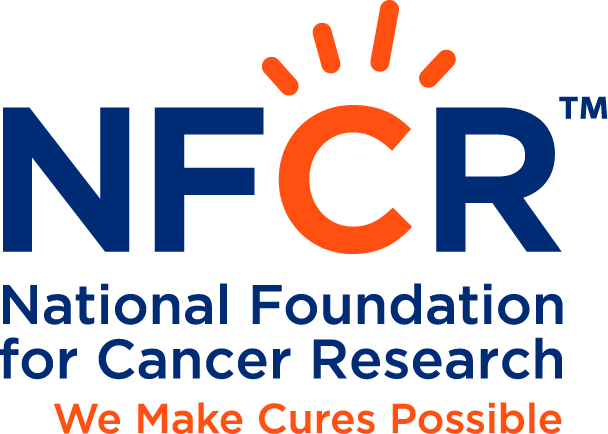Understanding Thyroid Cancer: A Serious, But Highly Treatable Disease

September is National Thyroid Cancer Awareness Month. Learn more about risk factors, symptoms, and available treatments for a disease predicted to affect more than 50,000 Americans in 2020.
September is National Thyroid Cancer Awareness Month. And, while you might often overlook the tiny, butterfly-shaped gland, it is worth understanding the important role it plays in keeping your body working like it should. Only slightly larger in size than a quarter, the thyroid produces hormones that help control your heart rate, body temperature, and metabolism, as well as regulate the amount of calcium in your blood.
Thyroid Cancer: Are You at Risk?
There are three types of thyroid cancer:
- Differentiated: Differentiated thyroid cancer includes papillary, follicular, and Hürthle cell cancers. Most thyroid cancers are differentiated cancers. These cancers can often be successfully treated and are rarely fatal.1
- Medullary: Medullary thyroid cancer accounts for approximately four percent of all thyroid cancers. It is more difficult to diagnose and treat than other thyroid cancers.1
- Anaplastic: Anaplastic thyroid cancer is rare, accounting for roughly two percent of all thyroid cancers. It can quickly spread into the neck and other areas of the body, making it very challenging to treat.1
Although anybody can be diagnosed with thyroid cancer — including celebrities like Sofia Vergara, whose journey back to health is spotlighted in this article from WebMD and Rod Stewart — there are risk factors that can increase a person’s chance of being affected by the disease. Some risk factors cannot be controlled, including:
- Gender: Women are three times more likely to be diagnosed than men;
- Age: Individuals ages 25-65 are most at risk;
- Race and Ethnicity: Individuals of Asian descent are at greater risk;
- Exposure to radiation to the head and neck;
- Family history of the disease; and
- Certain genetic conditions, including familial medullary thyroid cancer, multiple endocrine neoplasia type 2A syndrome, and multiple endocrine neoplasia type 2B syndrome.
However, other risk factors can be managed, including obesity and iodine in the diet.2 Living a healthy lifestyle, including eating a nutritious diet and exercising regularly, can decrease your risk for developing thyroid cancer, and other serious health conditions.
Recognizing Thyroid Cancer Symptoms and Understanding Treatments
Early stage thyroid cancer often does not cause any symptoms, and is usually discovered during a routine medical exam. As the disease advances, symptoms may begin to appear, including:
- A visible lump on the neck;
- Trouble breathing;
- Trouble or pain when swallowing;
- Hoarseness
Most thyroid cancers can be cured, especially when discovered early. Depending on the type of thyroid cancer and stage at which it is diagnosed, treatment can include one or more of the following options:
- Surgery, including a lobectomy to remove the lobe that contains the cancer or a thyroidectomy to remove the entire thyroid gland;
- Radiation therapy, including external radiation therapy or radioactive iodine therapy;
- Chemotherapy;
- Thyroid hormone therapy;
- Targeted therapy; or
- Watchful waiting
Remember that each treatment option has unique benefits and risks. All treatment decisions should be made in consultation with your health care team.
Recent Advances in Thyroid Cancer Research
The National Foundation for Cancer Research (NFCR) is proud to support scientists whose research is helping to advance understanding and treatments for thyroid cancer. NFCR-supported research conducted by Paul Fisher, MPh, PhD, professor and chairman of the Department of Human and Molecular Genetics at Virginia Commonwealth University (VCU) School of Medicine and director of the VCU Institute of Molecular Medicine, has led to the successful incorporation of a tumor suppressing “immuno-theranostic” in an adoptive cell therapy that reduces tumor size in mice. First tested in mouse models with prostate cancer, this technology has the potential to treat nearly any solid tumor, including thyroid tumors.
In addition, former NFCR-funded researcher Harold F. Dvorak, MD, the Mallinckrodt Distinguished Professor of Pathology at Harvard Medical School and chief of pathology for Beth Israel Deaconess Medical Center, discovered that tumor cells secrete a vascular endothelial growth factor (VEGF), which provided the molecular basis for the field of angiogenesis and paved the way for research on anti-angiogenesis treatments. The first VEGF-targeting anti-angiogenic drug, Avastin®, was approved by the U.S. Food and Drug Administration (FDA) in 2004, and is currently being tested in patients who have been diagnosed with thyroid cancer, with the hope that it may interfere with the ability of the cancer to grow and spread.
To learn more about thyroid cancer and NFCR-supported research, please visit our thyroid cancer webpage.
Additional Reads You May Enjoy:
Blindsided by Thyroid Cancer: Brittany’s Story
10 Ways Your Diet Can Reduce Your Cancer Risk
New Study Suggests Strong Social Support Can Improve Cancer Outcomes
Stay connected with us! Receive our monthly e-newsletter and blogs featuring stories of inspiration, support resources, cancer prevention tips and more. Sign up here.
___________________________________________________________________________________
References:
1 About Thyroid Cancer. (2019, March 14). Retrieved July 12, 2020, from https://www.cancer.org/content/dam/CRC/PDF/Public/8853.00.pdf
2 Thyroid Cancer Causes, Risk Factors, and Prevention. (2019, March 14). Retrieved July 12, 2020, from https://www.cancer.org/content/dam/CRC/PDF/Public/8854.00.pdf.











